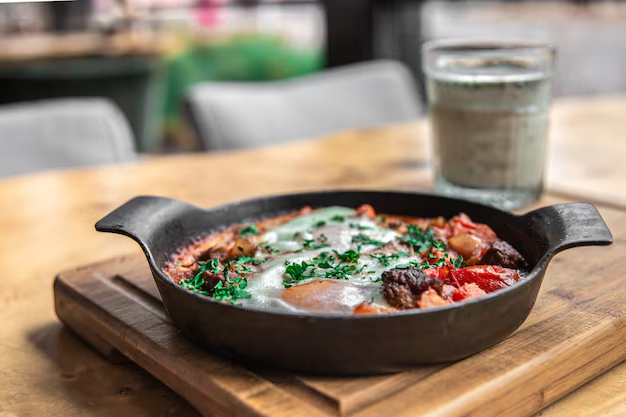Why You Should Avoid Storing Hot Food in Your Refrigerator
Imagine your kitchen after a delightful home-cooked meal: pots steaming, delicious aromas wafting through the air, and leftovers waiting to be dealt with. The fridge seems like the most convenient place to store that extra lasagna, but is it advisable to put your hot dish directly into the refrigerator? Although it seems harmless, this common practice can lead to various issues that you might want to avoid. Let’s explore why placing hot food in the fridge might not be the best idea, and reveal some practical kitchen tips to keep your culinary creations in perfect condition!
🌡️ Temperature Matters: The Basics of Refrigeration
Balancing the Cold and Hot
Refrigerators are specifically designed to maintain a cool environment, typically around 37-40°F (3-4°C), which slows down the growth of bacteria and preserves food for a longer period. When you place hot food inside, it can raise the internal temperature of the fridge. This fluctuation isn't just a minor inconvenience; it can compromise the quality and safety of other stored foods.
The Cooling Cycle Disruption
Modern refrigerators operate using a cooling cycle that involves compression, condensation, and evaporation. This cycle relies on consistent internal temperatures. Placing hot food in the fridge forces the appliance to work harder to restore its set coolness. Over time, such stress can affect its efficiency and lifespan.
🦠 Food Safety and Bacteria Growth
The Danger of the "Danger Zone"
Food safety experts often refer to the "danger zone," the temperature range between 40°F and 140°F (4°C and 60°C) where bacteria thrive and multiply. Putting hot food directly into the fridge can keep it in this range longer as it cools, heightening the risk of bacterial growth.
Potential for Cross-Contamination
The warm steam and moisture from hot food can increase humidity inside the refrigerator. This additional moisture can create the perfect breeding ground for bacteria and cross-contamination. Ensuring food stays out of the danger zone is crucial for kitchen hygiene and food safety.
🚫 Quality Concerns and Textural Changes
Loss of Flavor and Texture
The process of cooling food rapidly can affect its texture and flavor. For instance, hot soups, stews, and sauces might separate or thicken undesirably. Similarly, pasta or rice can become mushy and unappetizing. Letting food cool naturally before refrigerating can help preserve its intended taste and bite.
Condensation Challenges
When hot food is sealed in a container and placed in the fridge, condensation can accumulate on the lid. This leads to a sogginess that compromises taste and enjoyment. Foods like fried items or baked goods are particularly susceptible to this unappetizing transformation.
🌐 Energy Efficiency and Appliance Care
Strain on the Refrigerator
While ensuring food safety is a priority, we must also consider the operational demands placed on kitchen appliances. When hot food is added to the fridge, the appliance uses more energy to stabilize its temperature. This increased energy consumption may not figure prominently on an immediate scale but can accumulate over time, impacting utility bills and appliance longevity.
Prolonged Appliance Lifespan
A consistently overworked refrigerator can have a reduced lifespan as its components are subjected to increased wear and tear. Regular maintenance and mindful usage, including allowing hot food to cool before refrigeration, can support a longer-lasting appliance.
✅ Best Practices for Storing Hot Food
Cool Before Refrigerating
To minimize the potential dangers and drawbacks of refrigerating hot food, follow a few simple practices:
- Portion Food: Divide food into smaller portions to help it cool faster.
- Spread It Out: Use a wide, shallow container to allow heat to disperse quickly and evenly.
- Keep the Lid Off: Allow steam to escape as it cools, and only cover when the food is at room temperature.
Use an Ice or Cool Water Bath
To expedite the cooling process:
- Ice Bath: Place containers of hot food into a larger bowl or sink filled with ice water. Stir periodically to speed up cooling.
- Cool Water Bath: For less extreme cooling needs, use cold water instead of ice.
🤔 Frequently Asked Questions
Can I Leave Food Out Overnight?
Leaving food to cool is crucial, but allowing it to sit out overnight is not recommended because of potential safety hazards. Aim to refrigerate food within 2 hours to minimize any risk.
What About Hot Liquids?
Hot liquids like soups and broths pose similar challenges in refrigeration. Use an ice bath technique or divide the liquid into smaller containers to cool first.
How Do I Know When Food is Ready for the Fridge?
Using a food thermometer can ensure accuracy. When the food reaches approximately room temperature or just below, it is ready for the fridge.
🌟 Quick Tips for Hot Food Storage
Here’s a brief summary in bullet-point form for quick reference:
- 🥶 Cool Down: Use shallow containers and separate portions for faster cooling.
- 💧 Avoid Condensation: Allow food to cool uncovered before sealing.
- 🚫 Two-Hour Rule: Aim to refrigerate food within two hours of cooking to avoid bacteria growth.
- 🌬️ Ventilation Helps: Place cooling food near an open window or fan to facilitate faster temperature decrease.
By embracing these practices, you’re sure to keep your food delicious while optimizing your appliance’s performance and lifespan. Armed with this knowledge, you can master your kitchen efficiency, ensuring that every meal reflects your culinary prowess and safe food-handling savvy.
In the end, every step we take in our kitchen is an opportunity to create a harmonious environment that benefits both our health and our tools. Allowing hot foods to cool naturally before refrigeration is just one simple yet significant practice in maintaining that balance. Be mindful, cook joyfully, and store consciously!
